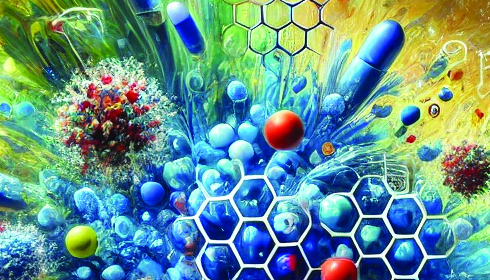
Looming Global AMR Challenge: New Breakthrough in Antibiotic Research
Antimicrobial resistance (AMR) has quickly emerged as one of the world's most significant health concerns, with many conventional bacterial illness therapies becoming ineffective. According to the World Health Organisation (WHO), if no action is taken, AMR might kill 10 million people each year by 2050, surpassing cancer as the leading cause of death. In this regard, recent advances in antibiotic research, particularly by a team at the University of Toronto (U of T), provide a ray of hope. Their novel family of antibiotics, which causes bacterial cells to self-destruct, could help to solve the rising AMR epidemic.
The key idea behind this innovation is to target the bacterial enzyme caseinolytic protease proteolytic subunit (ClpP), which is essential for bacterial cell maintenance. ClpP is typically involved in the breakdown of old or faulty proteins, aiding cellular "housekeeping." The researchers, directed by Dr. Walid A. Houry, created a chemical that activates ClpP. "With this approach, we are dysregulating a process, and this allows us to develop this new class of compounds that we eventually hope to get into a clinic," Houry explained in an interview about the team's discoveries published in the Journal of Medicinal Chemistry.
Unlike traditional antibiotics, which normally suppress bacterial functions, Houry's team's drug reverses the script by increasing ClpP activity to the point where it begins to destroy essential proteins within the bacterial cell. This self-destruction process may provide an alternative to established treatments that bacteria have developed resistance to. Houry continued, "Most antibiotics impede a process. What we're doing here is unique in that we're activating and speeding a process to the point where it kills the bacteria."
The consequences of this discovery are profound. The molecule shows particular promise in treating infections like meningitis and gonorrhoea, which are growing increasingly resistant to existing antibiotic therapies. Furthermore, this innovation could play a critical role in slowing the spread of AMR before it reaches catastrophic proportions.
One of the team's primary challenges was developing a chemical that would selectively target bacterial ClpP while not impacting the human form of the enzyme. Collaboration with the Canadian Light Source (CLS) at the University of Saskatchewan enabled them to complete this task. The researchers used the CLS's CMCF beamlines to visualise the structural differences between human and bacterial ClpP. This allowed the team to create chemicals that specifically target bacterial cells while not hurting human cells. "The tricky thing was trying to find a way to hit the bacterial ClpP, but not the human ClpP," laughed Houry.
This study comes at an important time, as experts around the world race to find new ways to combat AMR. As bacteria adapt and acquire resistance to conventional antibiotics, the need for novel approaches is greater than ever. WHO and other global health organisations have cautioned that if left unchecked, AMR might return medicine to the pre-antibiotic period, when common infections could prove lethal.
While Houry's discovery is an important step forward, much more work needs to be done before this new family of antibiotics may be used in clinical settings. The U of T team hopes that this unique technique may result in more effective therapies, particularly for infections that no longer respond to standard antibiotics. However, more comprehensive efforts will be required to solve the global AMR epidemic, including more sensible use of existing antibiotics and increased investment in the development of novel antimicrobial medicines.
While the fight against AMR is far from over, innovations like the one from the University of Toronto provide a ray of light amid a developing worldwide health issue.